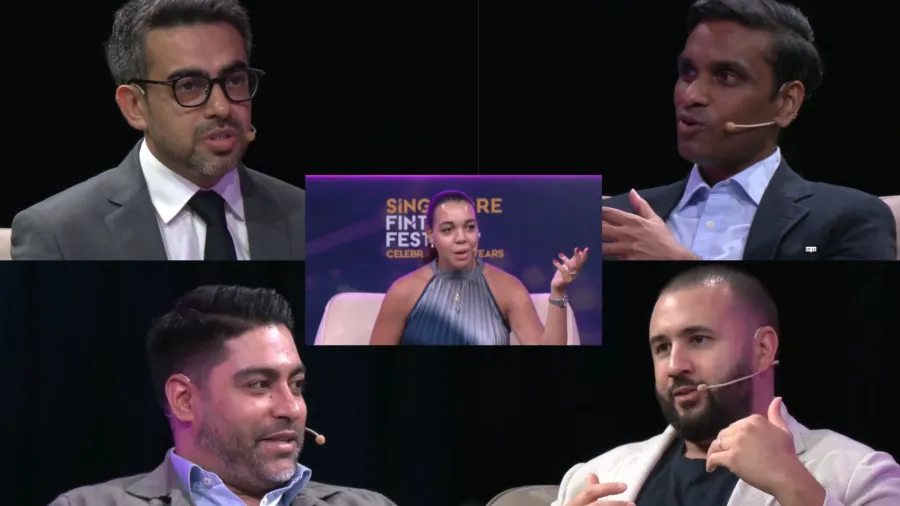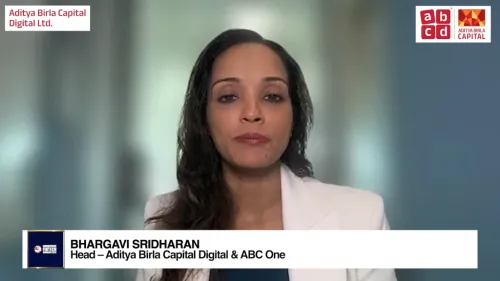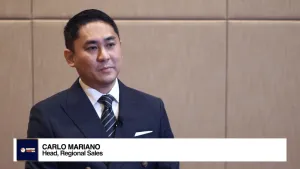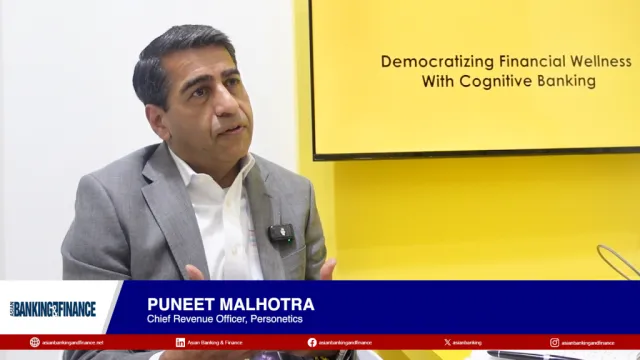
Why finance leaders push tokenisation as next phase of digital money
Tokenised deposits invert the model, allowing banks to deliver liquidity directly where required.
Finance leaders say there is still a lack of interoperability between traditional financial infrastructure and emerging digital money systems, and stablecoins might just be the solution.
“The buzz has always been around stablecoins,” said Naveen Mallela, Global Co-head of Kinexys at J.P. Morgan, “but stablecoins are just one of the options that you have,"
The rise of stablecoins, deposit tokens, and tokenised assets has transformed the definition of “money,” forcing banks, payment networks, and regulators to rethink liquidity, interoperability, and compliance frameworks.
From J.P. Morgan to Visa, Banking Circle to Pave Bank, financial leaders at the Singapore FinTech Festival 2025 described how they are reengineering financial infrastructure to manage risks while unlocking new efficiencies across borders and currencies.
Mallela announced that J.P. Morgan had successfully launched the first-ever deposit token on a public blockchain, marking a milestone in how bank money is represented and transferred.
He emphasised that this “decoupling of the ledger from the payment instrument” is a fundamental shift, enabling commercial bank money to exist on-chain while maintaining its deposit-backed security and regulatory clarity.
By extending deposit-based products into tokenised form, banks can make liquidity available “in venues where it is required,” effectively inverting the traditional model where clients come to banks for access.
“It’s money available in venues where it is required,” said Mallela, “not you come to us where you need money,” Malella told moderator, Elise Soucie Watts, Executive Director, Global Digital Finance, of the “Digital Money: How Forward-Looking Institutions Are Managing Risks and Seizing Opportunities” session held on 12 November at the FutureMatters stage.
This evolution hints at a hybrid ecosystem where stablecoins, deposit tokens, and CBDCs (Central Bank Digital Currencies) coexist (each addressing different market needs).
As Mallela noted, “We’re not going to see a mass replacement of all RTGS systems anytime soon… There will be extended coexistence,"
For Mishal Ruparel, Chief Commercial Officer at Banking Circle, the next phase of digital money is about interoperability — the ability to move value instantly across networks and borders.
Ruparel said that clients increasingly ask how digital assets like stablecoins and tokenised deposits can “provide real-time payments in an instant, 24/7, with absolute clarity,"
For Cuy Sheffield, Visa’s Head of Crypto, the conversation is no longer about speculative crypto but about infrastructure.
“When most people think about Visa, they recognise you have to pay with your card, and it just works instantly. What they don’t realise is that we can’t actually move the money behind the scenes as fast as we can authorise payment,” Sheffield said.
Visa’s experiment with USDC (USD Coin) as a settlement currency aims to solve that bottleneck.
This experiment has scaled quickly, and Visa now accepts stablecoins on multiple blockchains, including Ethereum and Solana.
Salim Dhanani, CEO of Pave Bank, argued that modern financial institutions must be rebuilt from the ground up for programmable finance.
Pave Bank’s new core banking stack is designed for “programmable compliance,” where smart contracts can automate risk and policy enforcement.
“If money is on-chain, it’s traceable,” Dhanani said. “You can see at every stage what happens. The question really comes down to, where is the institution responsible for what happens?”
He envisions a future where institutions manage “programmable risk management” within standardised, interoperable frameworks.
Looking ahead, the panellists agreed that programmability and AI integration will define digital money’s next frontier. Below are snippets of the panel discussion:
Watts: You've done a lot of work on B2B mainstream payments. What is your perspective in terms of the use cases that are gaining the most traction with your clients?
Ruparel: In the last 10 years, we've been focused on building domestic clearing rails, enabling real-time payments in domestic markets. The key question is: how do we bring interoperability within these schemes? Ideally, that’s what enables real-time payments across borders.
At some point, we’ll still be running payments through correspondent banks. We all know this space inside out — there are lags between tier one, tier two, and tier three. We never know what the final amount will be when the funds actually settle.
This is where our clients are talking to us about using digital assets — stablecoins, tokenised deposits, deposit tokens — all of these different types of tokens that, in essence, provide real-time payments instantly, 24/7, with absolute clarity. It’s a conversation most of our clients are having, and I see this becoming a prominent part of our business going forward.
Watts: Deposits are not the only game in town, and you’ve been doing a lot of work with stablecoins as well — something you’ve been working on and discussing for a long time. Could you talk about the experimentation you’ve been doing, and what you see in terms of interoperability across these different coins, including DeFi?
Sheffield: It’s been a really interesting journey at Visa. When most people think about Visa, they recognise that you can pay with your card and it just works instantly.
What they don’t realise is that we can’t actually move the money behind the scenes as fast as we can authorise the payment.
We’re dependent on existing infrastructure — Fedwire, SWIFT, correspondent banking — to move the money between our clients.
When we saw stablecoins emerge a few years ago, we started to ask: Is there an opportunity to use them on the back end to improve the way we settle and move money?
We found there was an initial set of clients already issuing crypto-linked cards or operating their corporate treasuries on-chain. It was a big challenge for them to have to convert back to fiat just to settle with us.
So we said, wherever we can, we’ll meet clients where they are. If you want to settle with us in USDC, great — send us USDC. We’ll receive it, convert it to fiat, and pay out our clients. We’ve been able to do that and scale it up quickly with a number of our clients.
Watts: How did you think about designing that from the ground up? Does it look different from your experience with legacy financial services technology? And again, let’s touch on the risk aspect — how do you think about managing it?
Dhanani: If I take a step back, we had a lot of internal debates about this — buy versus build. Should we buy a core stack? Would it be fit for purpose? In the end, we said absolutely not — we have to rebuild it from scratch.
Today, we talk about cross-border; tomorrow, we’ll be talking about programmability. If you believe that smart contracts will be placed on money and tokenised assets more broadly, then the way you interpret contracts — and the standards they’re based on — will require a fundamentally new technology stack.
That also plays a role in how you look at risk. For us, liquidity is less of a concern because of the decisions we made early on. But when it comes to compliance risk, that’s where things become more complex, because now money is open.
It’s important to talk about the dichotomy we see in regulatory conversations. Today, when someone makes a cash deposit or withdrawal, the bank is responsible for monitoring that transaction.
What happens after that, in later stages, is no longer the bank’s responsibility — yet the bank still operates in that space. With money on-chain, everything becomes traceable; you can see every stage of a transaction. This is both a pro and a con.
Watts: We have tokenised deposits, and we have tokenised money market funds getting a lot of attention lately. We’re also thinking about the governance and risk management frameworks we need. How do you help promote deposit tokens? And how do you think about that from a regulatory perspective — but also from the standpoint of the general public, ensuring they understand what it means in this future interoperable world?
Mallela: I think interoperability is one of the critical aspects for any of this infrastructure to scale. And interoperability is not just between the newer forms of money or the newer platforms. It’s also between the current and the new.
We will be in a state of extended coexistence — we’re not going to see a mass replacement of all current RTGS systems anytime soon. I believe that the winners in this new era will be those who can bridge all of these systems seamlessly. That’s the first point I want to make.
The second point is about programmable compliance.
Having worked in this space for the last decade or so, I can say that the friction isn’t with straight-through processing — it’s with exception processing in cross-border payments. Why does that friction exist? Because you have multiple banks in the chain performing the same compliance checks over and over again.
If we really want to streamline cross-border payments, we need programmable compliance, the ability to rely on portable proofs of compliance checks, and the ability to wrap tokens with different policy wrappers. These are essential capabilities.
Coming to deposits — not many people think about them deeply, but we should view this from the user’s perspective.
What we want to provide is money that’s always on, programmable, highly liquid, and moves instantly. Once you achieve that, I’d argue that deposits are actually the superior form of money.
You get the certainty of a deposit — you know how it appears on your balance sheet, you have the legal certainty of deposit insurance, you earn interest, and you get the safety and soundness that back it.



















 Advertise
Advertise










